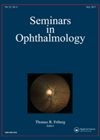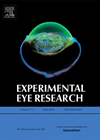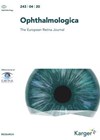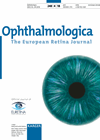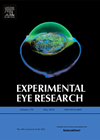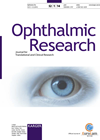You searched for "vascularisation"
FA findings in treatment-naive premature infants
This retrospective study examined fluorescein angiography (FA) images of 162 eyes of 81 treatment-naive infants with retinal vascular immaturity and persistent avascular retina (PAR) despite exceeding postmenstrual age of 60 weeks. Disc diameter (DD), optic disc-to-fovea distance (FD), the length...MicroRNA inhibits corneal neovascularisation
1 August 2018
| Graham Wallace
|
EYE - Cornea, EYE - General
|
Biomechanical stress, Corneal epithelium, MicroRNA-204, Neovascularization, VEGF, VEGFR2
MicroRNAs (miR) are small non-coding RNA that target mRNA for destruction. MiR target about 30% of the protein coding genes and fine tune their expression. MiR have been shown to be involved in several cellular processes including cell cycle, tissue...
Microvasculature changes of mCNV after ranibizumab treatment using OCTA
4 February 2021
| Sofia Rokerya
|
EYE - Vitreo-Retinal
In this study the authors aim to evaluate the vascular changes of myopic choroidal neovascularisation (mCNV) after ranibizumab treatment using optical coherence tomography-angiography (OCTA). The 3×3 OCTA en face images were analysed for the absence / presence of mCNV, CNV...
Results of fixed aflibercept treatment regime in type 3 neovascularisation
1 April 2020
| Sofia Rokerya
|
EYE - Vitreo-Retinal
In this prospective study the authors evaluate the effect of intravitreal aflibercept injections in the treatment of naive type 3 neovascularisation using a fixed treatment regime. Fourteen eyes of 14 patients were studied. All patients were treated with intravitreal 2.0...
Clinical relevance of the anatomic classification of neovascular age-related macular degeneration
The author explains why an OCT-based classification of neovascular AMD is needed and how these neovascular subtypes may help to predict patients’ long-term visual outcome. Age-related macular degeneration (AMD) is a chronic and progressive neurodegenerative process involving the macula in...Corneal crosslinking in pellucid marginal degeneration
Fourteen studies were included in this first review examining the use of corneal-crosslinking (CXL) to treat pellucid marginal degeneration (PMD). PMD is a bilateral, non-inflammatory corneal thinning disorder characterised by inferior peripheral corneal thinning 1-3mm from the limbus in the...Transfected RPE cells inhibit AMD in rats
1 August 2015
| Graham Wallace
|
EYE - Vitreo-Retinal
Age-related macular degeneration (AMD) is a leading cause of blindness in the elderly. Wet AMD is characterised by choroidal neovascularisation, new vessels into the retina, leading to leakage and tissue damage. Many proangiogenic factors particularly vascular endothelial growth factor (VEGF)...
Fluorescein angiography and OCT in myopic CNV
1 December 2014
| Bheemanagouda Patil
|
EYE - Vitreo-Retinal
Fluorescein angiography (FA) and spectral-domain optical coherence tomography (OCT) are the most common examinations used in the management of anti-VEGF therapy in choroidal neovascularisation (CNV). In comparison to FA, OCT provides a noninvasive evaluation of the macula. Myopic CNV are...
In conversation with Professor Usha Chakravarthy (2018)
1 March 2019
|
EYE - Vitreo-Retinal, EYE - General
Professor Chakravarthy popped by the Eye News stand at the 2018 Royal College of Ophthalmologists Annual Congress after her excellent Bowman Lecture. She gave us a summary of her presentation, which looked at how our understanding of AMD has changed...
Customised corneal crosslinking with supplemental oxygen
In this prospective interventional case series, the authors investigate using supplemental oxygen delivery during epithelium-on corneal crosslinking (CXL) with specially designed oxygen delivery goggles. Twenty-seven eyes of 24 patients underwent epi-on CXL with Riboflavin and Ultraviolet-A irradiation. At six months...Ocular mucous membrane pemphigoid: the importance of early detection and treatment
1 August 2014
| Inderpaul S Sian, Bhaskar Gupta, David Cadman, Keith Bates
|
EYE - Oculoplastic, EYE - Orbit
Mucous membrane pemphigoid (MMP) is an autoimmune blistering disorder that is characterised by subepithelial bullae. The ocular manifestation of MMP, ocular mucous membrane pemphigoid (OMMP), is a sight-threatening condition characterised by conjunctival cicatricial changes associated with corneal vascularisation and scarring....

